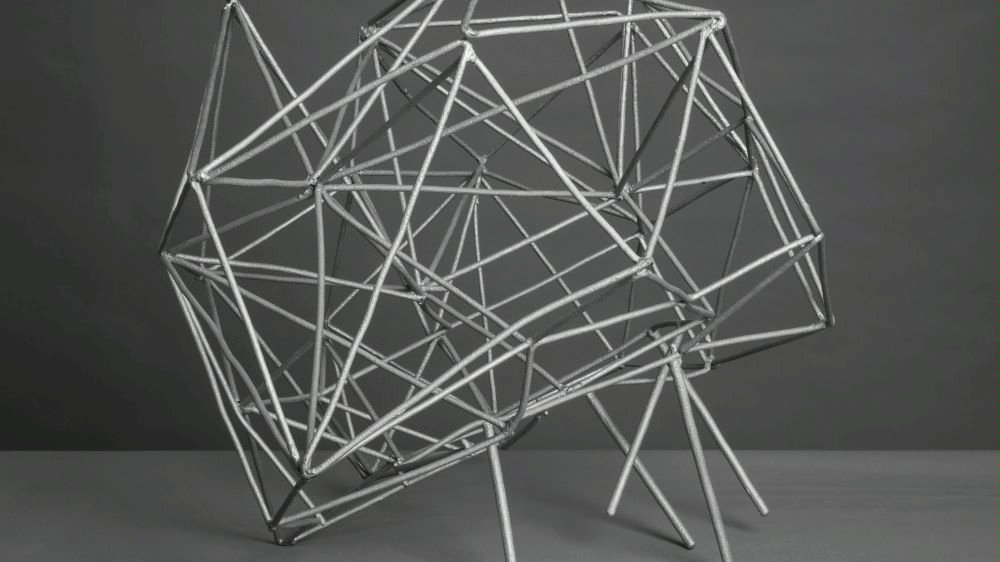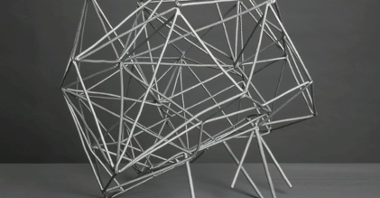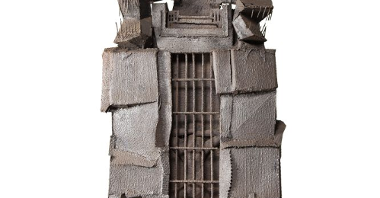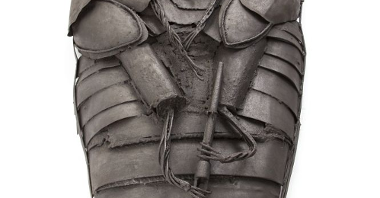The iron artist

Known as the iron artist and a master welder, Julian Boss-Gosławski has been deconstructing the world order and poking holes in the conservative view of art since the early days of his sculpting career. He studied at the State Higher School of Fine Arts of Sopot and in the Faculty of Sculpture in Poznań in the 1940s and "50s. He has never been interested in traditional materials and made his sculptures of wood and metal. Neither has he ever ceased to experiment. Boss-Gosławski would resort to stone, sheet metal, pipes, and steel plates to create multidimensional compositions. He was a member of the avant-garde group 4F+R (whose name comes from the Polish words for form, paint, texture, fantasy + realism), which postulated moving away from the hermetic dimension of art towards a synthesis of painting, sculpture, and industrial design on the one hand and everyday life on the other.
His refreshing view of art resonated in his work. Despite his engagement in applied sculpture, Boss-Gosławski never abandoned projects of purely artistic value. His most recognisable works date back to 1966-1975. It was during this time that he made compositions of wire, metal sheets, and burnt wood and explored the making of open metal forms. He opposed the then prevailing doctrine of socialist realism and consistently emphasised the creative role of the thought process in producing his work. This puts his pieces in the context of arte povera or poor art, and that of visualism or op art. The latter trend underlined the relationship between the viewer and the work of art using broadly defined optical illusions and visual field distortions in abstract compositions.
The works of Boss-Gosławski cannot be described without unambiguously. His spatial forms make up meticulously constructed worlds of metal and plastic that not only require perfect familiarity with matter but also draw viewers into profound intellectual discourses and reflections on art in and of itself. Andreas Billert said this about Boss-Gosławski's work: "Julian's concept of art stems from his conviction that - unlike manufacturing - art must involve a transformation of the same matter. In this way, art reflects the modern model of the universe, which is both finite and infinite. The materials that Julian Boss-Gosławski used to create his works were mutually linked by affinity. Art means being entangled in the same matter and incessantly seeking to revive it".
The key to noticing finesse in Boss-Gosławski's monumentally massive work is to thoroughly observe and examine the textures and merged materials of his creations and the perceptual discussions that such work inspires. Each work tells a different and at times undiscovered story.
Klaudia Strzyżewska
translation: Krzysztof Kotkowski
Exhibition of works by Julian Boss-Gosławski
Piekary Gallery
Opens 19 August at 7pm
Open until 7 October
© Wydawnictwo Miejskie Posnania 2022
See more

Days of Polish Culture in Brno

Poznań-Szombathely exchange as part of the City-to-City Exchange project

Open lecture: "Eighteenth-Century Literary Celebrity and Adaptation in the Twenty-First Century: A...



